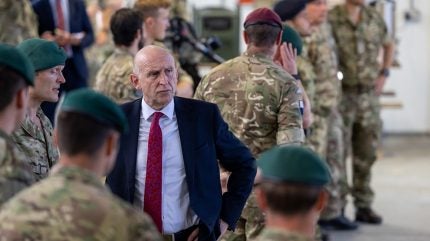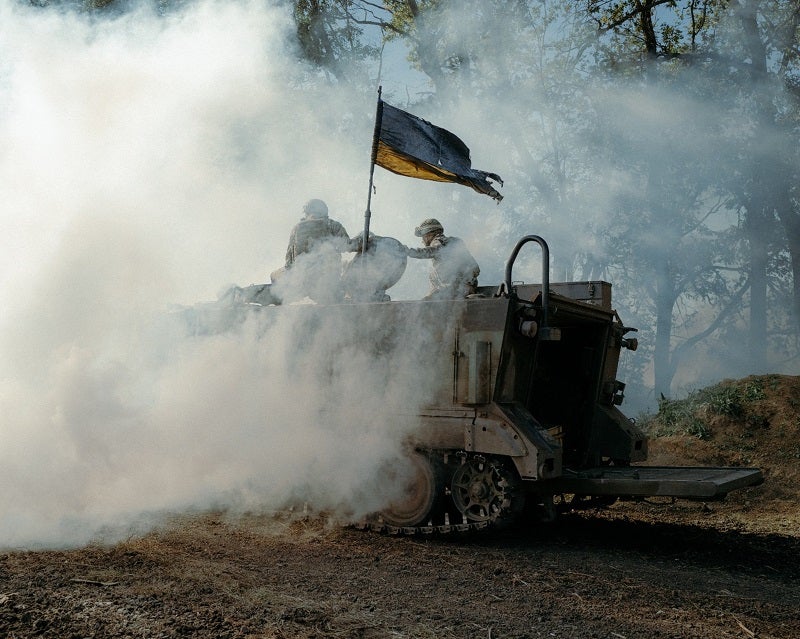
The UK government announced that it will boost Ukraine funding with a £2.26bn ($2.93bn) war loan on 22 October 2024. These funds will be repaid by the profits derived from frozen Russian assets.
Ukraine’s head of state, Volodymyr Zelenskyy, welcomed the financial assistance, earmarked to cover the expense of military procurement, noting that the donor is the first G7 nation to contribute to the Extraordinary Revenue Acceleration (ERA) mechanism.
Members of the G7 established the ERA scheme on 14 June 2024 with the intention of providing approximately $50bn to the war-torn nation. “Turning the proceeds of Putin’s corrupt regime against that regime and putting it in the hands of Ukrainians” is necessary suggested the UK Secretary of State for Defence, John Healey, in a speech to Parliament.
He is right. Consider Ukraine’s position in the field as its forces struggle to repel marginal Russian advances in the Donbas and lose up to a quarter of the Russian territory it gained form its incursion into the Kursk region in August. A greater scope for military procurement will help to strengthen the country’s resilience as it enters the winter period, particularly to enhance its air defence capabilities against enduring Russian strikes.
The UK government was also quick to add that this round of assistance is distinct from recent support packages including the £3bn per year of bilateral military assistance to be provided “as long as required” and the £3.5bn Defence Industrial Treaty signed in July.
Prior to these latest funds, which Russian proceeds will pay off, the UK committed £12.8bn for Ukraine: £7.8bn in military support and £5bn in non-military aid, as of 21 October.

US Tariffs are shifting - will you react or anticipate?
Don’t let policy changes catch you off guard. Stay proactive with real-time data and expert analysis.
By GlobalDataEurope also dips into Russian proceeds
On the same day, the European Parliament also approved a loan of up to €35bn ($37.7bn) through a newfound framework known as the Ukraine Loan Cooperation Mechanism.
Notably, this loan is the EU’s part of the wider $50bn G7 package that leans on the proceeds of immobolised Russian assets. Specifically, the EU contribution will derive from the profits accrued from the frozen assets of the Russian Central Bank in Europe; Kyiv may allocate the funds as it sees fit.
Although the UK was the first to contribute to the ERA mechanism, France’s Armed Forces Ministry announced it would derive €1.4bn from profits on frozen Russian assets on 6 September. Uniquely, these funds will be funneled to France’s sovereign defence industry for the rapid acquisition of military equipment for Ukraine.
Through this plan, with approval from the European Commission, Ukraine will begin with an order for ammunition, artillery and air defence worth €300m throughout 2024.
Sustain Ukraine, outlast Russia
In his speech to Parliament, Healey listed Russian equipment losses: 3,400 tanks, 8,500 armoured vehicles and 26 Russian vessels, and 675,000 troop casualties since the beginning of the war.
These figures are more conservative than Ukrainian reports: 9,000 tanks, 18,000 armoured fighting vehicles, 28 vessels and 700,000 personnel. These differences may account for the UK’s limited ability to confirm losses, among other reasons.

Nevertheless, the accounts give a sense of the considerable toll on the Russian war economy which will struggle to sustain a war of attrition at this rate:
Russian artillery is outfiring Ukraine by at least three to one, Russia is conscripting 400,000 more troops this year, and defence will now account for 32%, one third of the total government budget in Russia next year.
Without allied efforts to strip Russia of its proceeds, the UK government emphasised the enemy would have more than $400bn more for its war machine – enough to finance its illegal invasion for a further four years at least.



